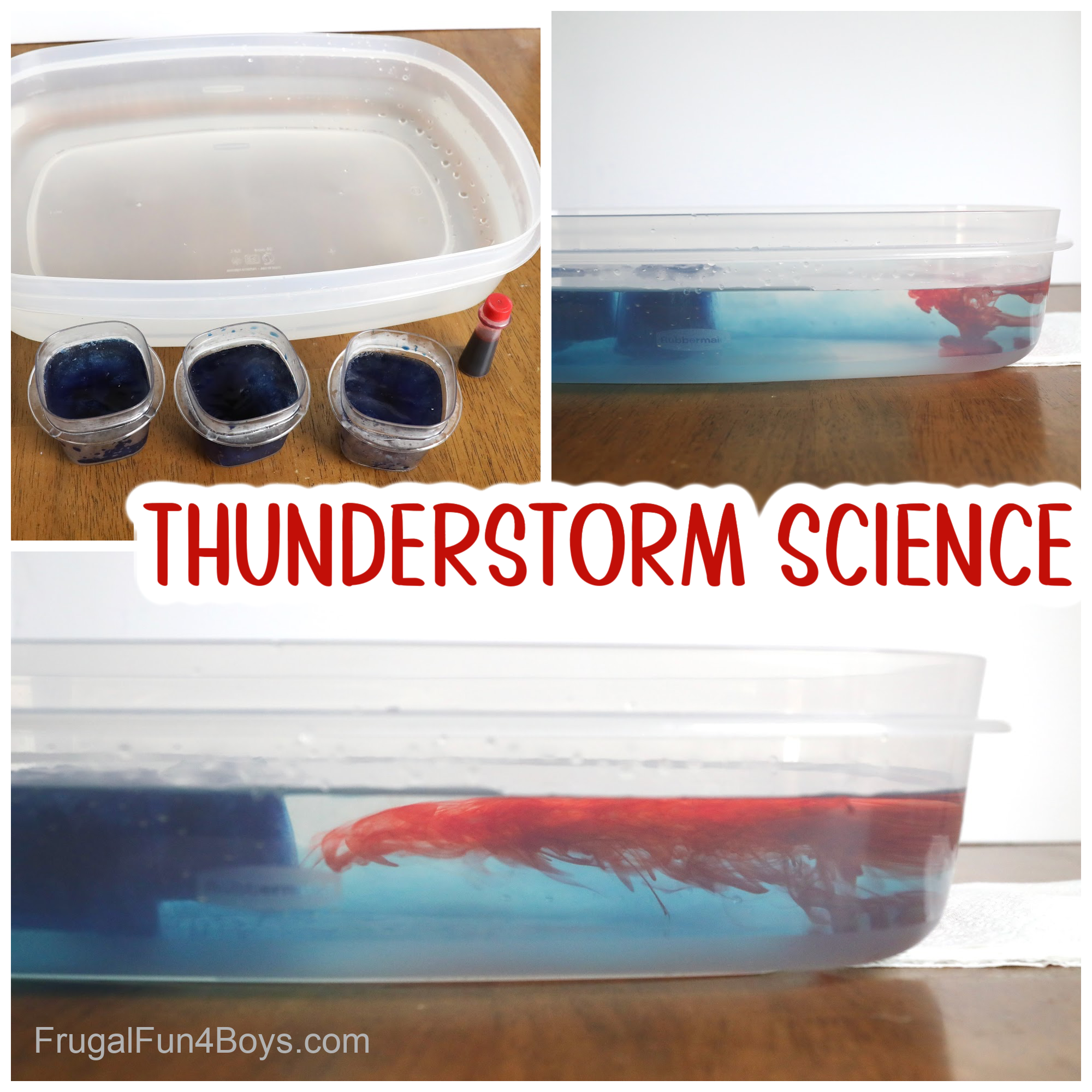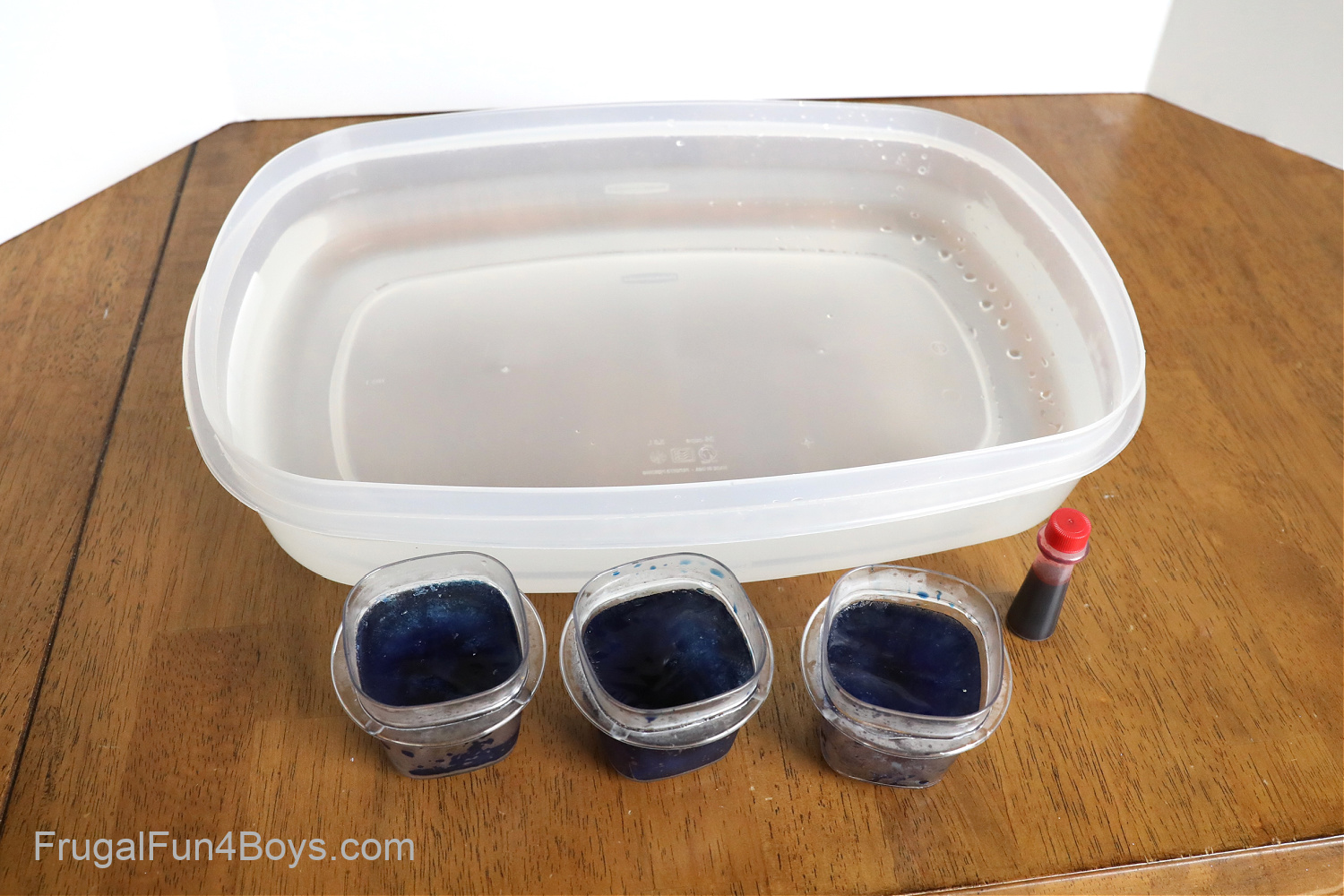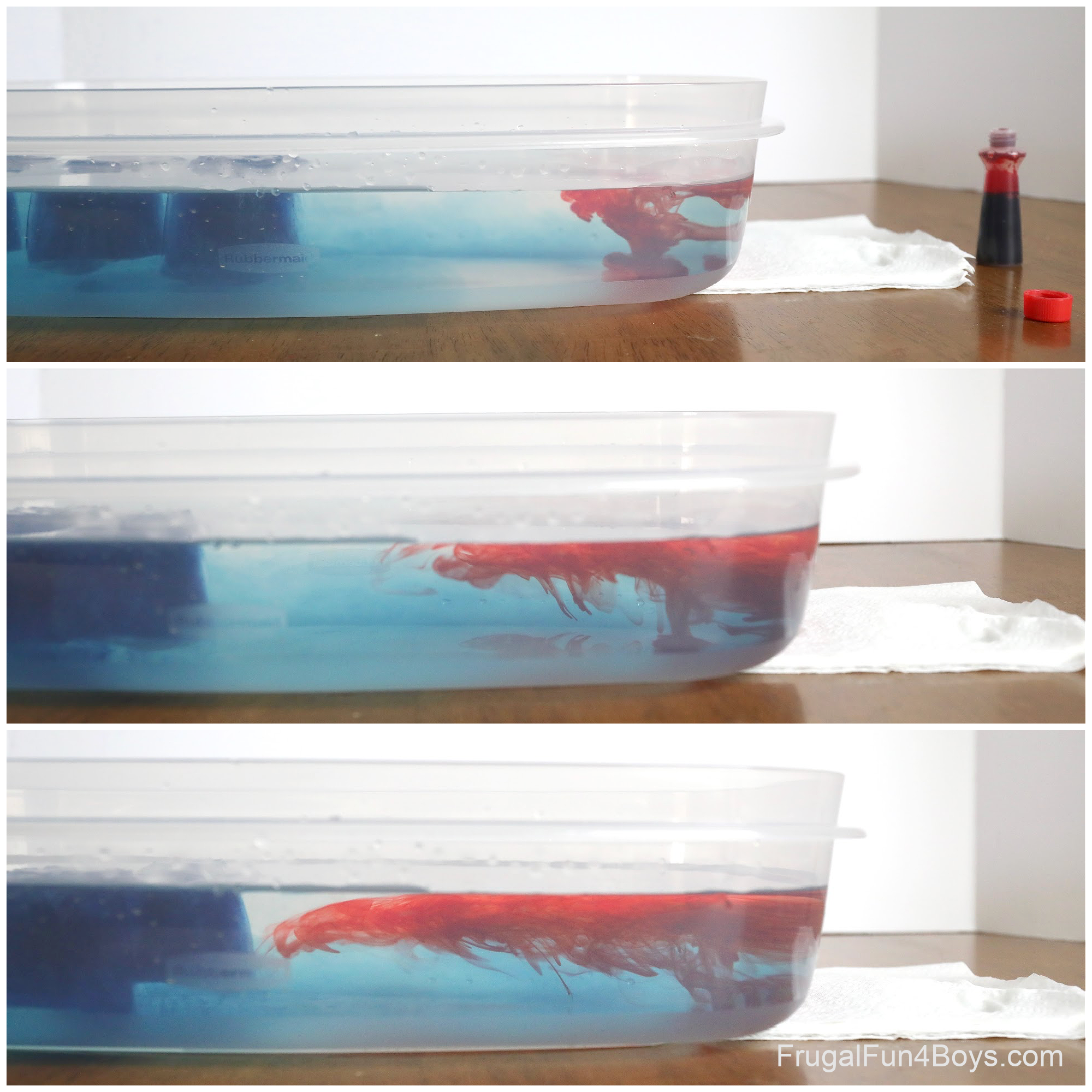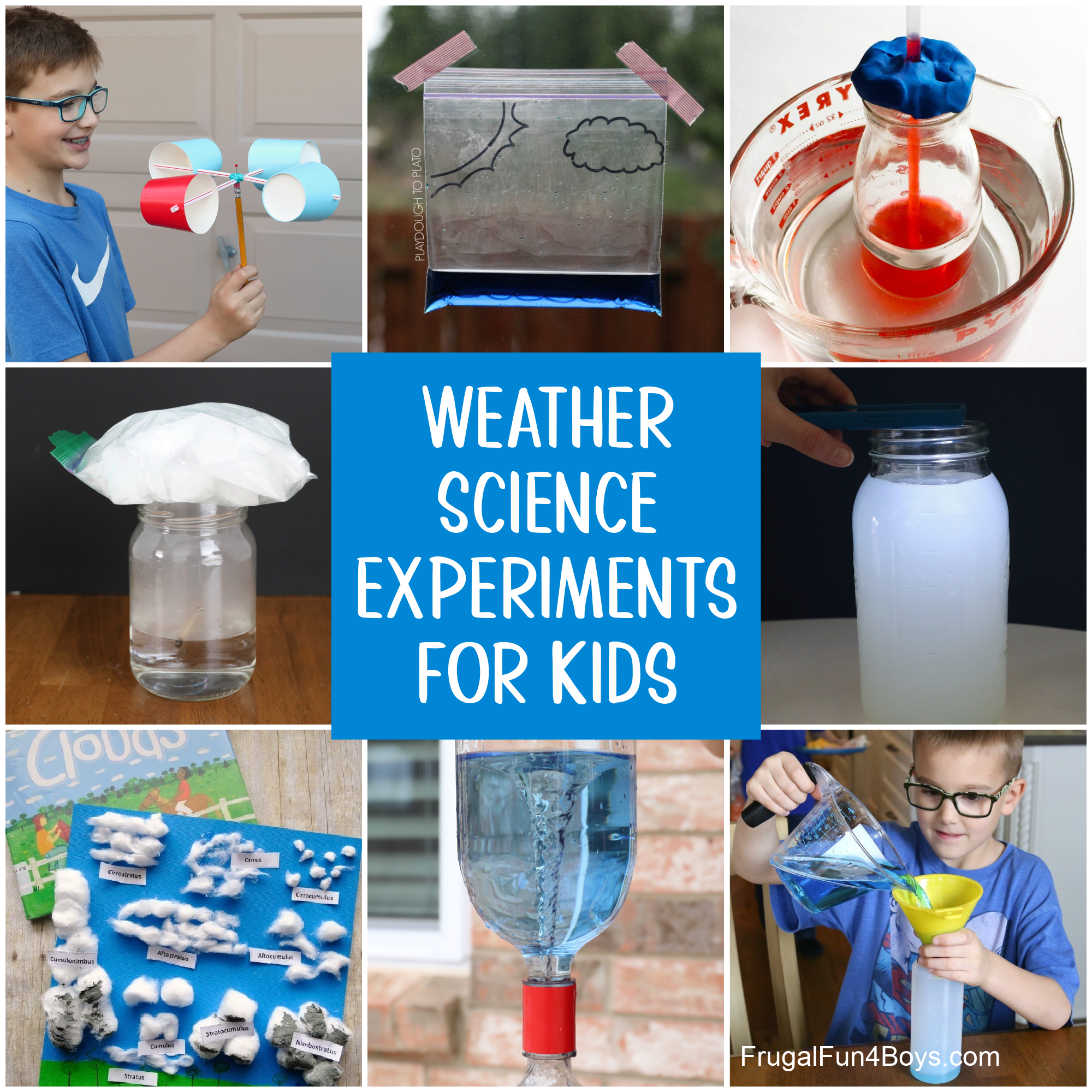Here’s a fun weather science experiment that demonstrates how thunderstorms form! Kids will be able to actually see how cold air pushes warm air up, which creates those tall clouds known as thunderheads.
Here in Texas, we know a lot about thunderstorms! We can have thunderstorms during any part of the year, but our spring storm season can be especially active with severe thunderstorms that contain high winds, large hail, and even tornadoes.
Thunderstorms can definitely be scary for kids. Even though we are powerless to control thunderstorms, it can help to know a little about them.

How do thunderstorms form?
Thunderstorms develop when warm air rises to higher levels of the atmosphere. The warm air cools, and since cooler air can hold less moisture, the moisture in the air condenses onto dust particles creating clouds.
Rising warm air can happen on a summer afternoon when the sun has heated the air near the ground. The heated air is less dense and rises, cools, and develops into a thunderstorm. Or, a cold front can cause thunderstorms when it comes sweeping through, pushing less dense warm air upwards. Thunderstorms that form along the edge of a cold front are generally stronger than those caused by afternoon heating.
Thunderstorm Science Experiment
Here’s a way to really show students how cold air creates updrafts of warm air. We’ll be using water, but the concepts are the same.
Supplies Needed:
- A rectangular plastic dish
- Warm water
- Blue and red food coloring
- Ice cube tray, or small containers
Step 1: Make some blue ice cubes.
We don’t have an ice cube tray, so I used these tiny containers to freeze some water with blue food coloring. I used 2-3 drops in each container.

Step 2: After your ice cubes are completely frozen, fill your plastic container with warm water.
This experiment doesn’t work as well if the water is hot – the food coloring will move too quickly. Water that is just maybe slightly warmer than room temperature is great.

Step 3: Place the blue ice cubes at one end of the container. Then add 3-4 drops of red food coloring to the other end of the container.
Then watch what happens!
The cold (blue) water will spread across the bottom of the container, pushing the red (warm) water upward. It really is amazing to watch!
Explain to the kids that the red water represents warm air that rises in the atmosphere and then cools. This rising action (called updrafts) is what causes thunderheads!

Head over to see more Weather Science Experiments! You can also print a fun weather journal for kids.


0 Comments
Post a Comment